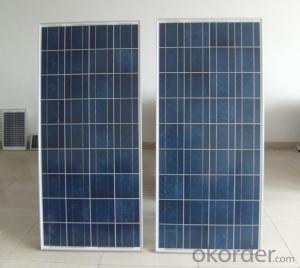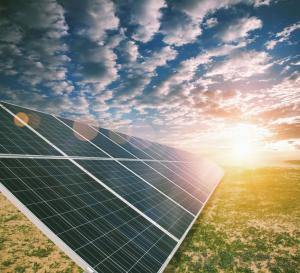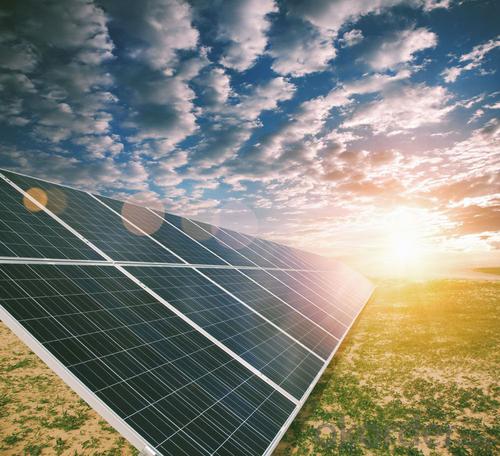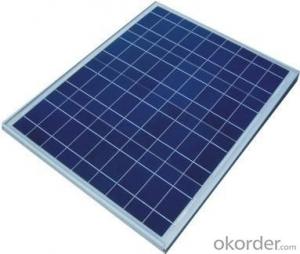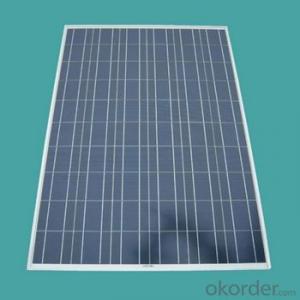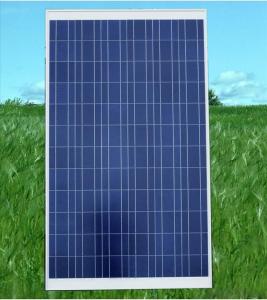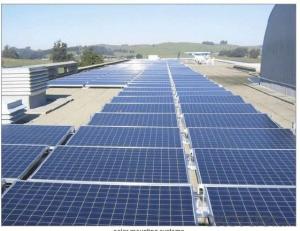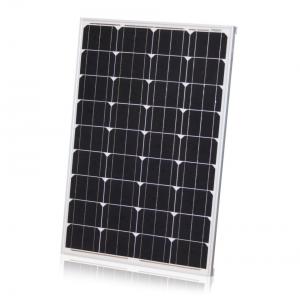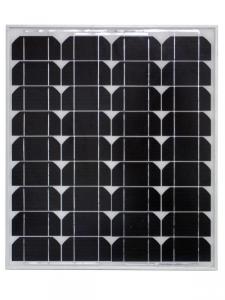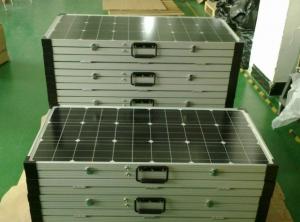Mobile Home Solar Panels - Polycrystalline Silicon 250W Solar Panels
- Loading Port:
- China main port
- Payment Terms:
- TT OR LC
- Min Order Qty:
- 100000 watt
- Supply Capability:
- 10000000 watt/month
OKorder Service Pledge
OKorder Financial Service
You Might Also Like
Specification
About us
CNBM International Corp, established in 2004, is the business entity for trade and logistic of CNBM Group.With the
advantages in Cement, Composite Materials, New Building Materials and Engineering, CNBM mainly concentrate on coal, steel
and construction equipments and give priority to solar and wind energy development.CNBM International is highly recognized
by its business partners and clients all over the world and has established good business relationship with the customers
in over 120 countries and regions all over the world.
Introduction
This installation Manual contains essential information for the electrical and mechanical installation that your must know before installing CUSTOMER PV modules. This also contains safety information you need to be familiar with .All the information described in this manual are the intellectual property of CNBM and based on the technologies and experiences that have been acquired and accumulated in the long history of CUSTOMER. This document does not constitute a warranty, expressed or implied.
Data sheet
Maximum Power | 250W |
Efficiency | 0.154 |
Backsheet | White |
Frame Colar | Silver |
Manufacture Site | China |
Frame | Anodized Aluminum Alloy |
Weight | 19 kg |
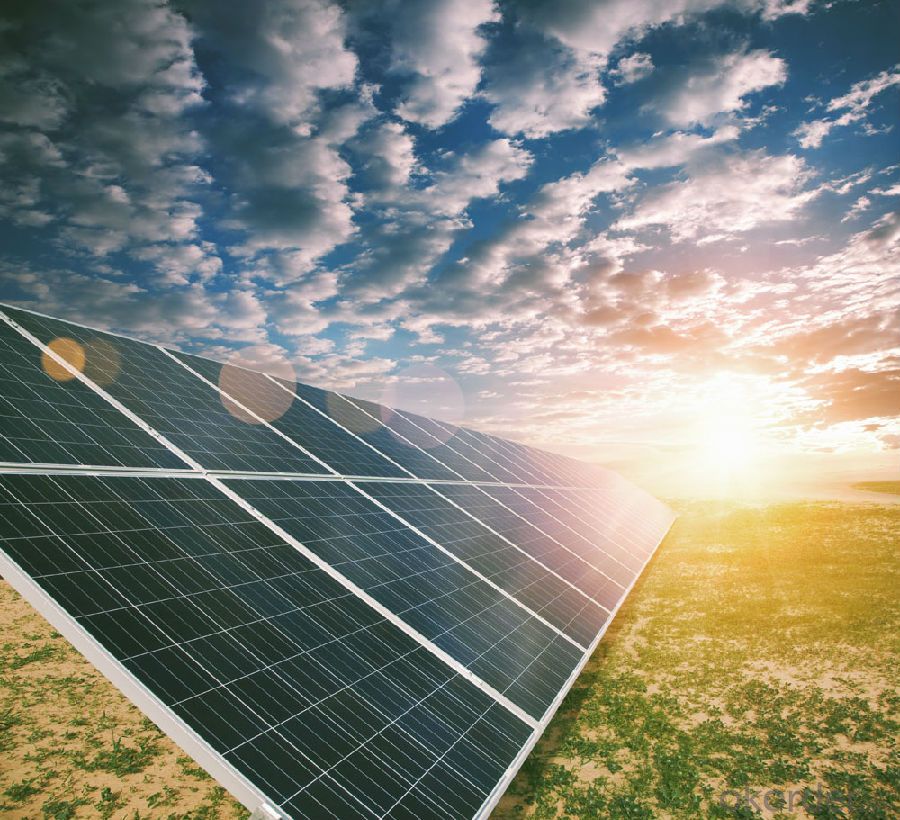
FAQ:
Q1: Why buy Materials & Equipment from OKorder.com?
A: All products offered byOKorder.com are carefully selected from China's most reliable manufacturing enterprises. Through its ISO certifications, OKorder.com adheres to the highest standards and a commitment to supply chain safety and customer satisfaction.
Q2: What is a solar PV module?
A: A solar PV module consists of many solar cells that are connected together (typically in series) and packaged in a frame (typically made of aluminum).
Q3: What are the advantages and disadvantages of monocrystalline solar PV modules?
A: Monocrystalline solar PV modules are the most efficient type of solar PV modules, with the exception of CdTe thin film solar PV modules. As a result, monocrystalline solar PV modules are more expensive when compared to almost all other types of solar PV modules.
- Q: what is a solar panel?
- A panel that is attached to the top of a roof of a house that converts the suns rays into electrical energy that can be harnessed and used to power appliances, light rooms etc. through silicon particles.
- Q: Can solar panels be installed on a sports stadium?
- Yes, solar panels can be installed on a sports stadium.
- Q: I am moving to Hawaii and the house we are living in has independent electricity. (solar panels and gas powered generators.)
- Guide okorder /
- Q: I have a solar panel i got for free and I don't know what to do with it. Its kinda big at about 20x 0and it puts our 2 VOC / .23 ISC. I don't know of anything that I could use it for. Its too big to say charge a phone or ipod....any suggestions??
- Hey AJ, Tom is quite right, a panel that size is a great trickle charger at .2 amps. If you have a good sized 2 volt battery, like from a truck, or for a boat trolling motor (it should be at least 60 amp hours) you can hook it to the battery and it will charge it slowly anytime the sun shines. Don't worry about the voltage, most 2 volt nominal volt panels are wired for 8 - 9 volts, and if you hook them to a battery, the panel voltage comes right down to the batteries charging curve voltage anyway, they are designed for that. What you do need is a diode. A diode is an electrical check valve, allowing current to flow in one direction, but not the other. This will prevent the battery from discharging through the panel at night. Many panels today come with diodes inside the junction box on the back of the panel. If yours does not have any, go to Radio Shack, look for a 6 amp silicone diode, usually around75 cents. Put it in series between the panel and the battery, then, while you have a voltmeter hooked to the battery, connect the panel/diode to the battery and see if the voltage goes up slightly. If it does, you're all set. If not, turn the diode around and try it again. It has to be connected into the circuit the correct direction. Many people will state that you need a charge controller, but this is not necessary if your panels max current, ISC is less than 2% of your batterys amp hour capacity. In your case, if you have a 60 AH or larger battery, skip the controller. There is a great discussion about this in Richard Perez's book, I will list it below. If you want to learn more about these devices, there is a great magazine that gets into the nuts and bolts of renewable energy, it's called Home Power Magazine, the link is below. We started by hooking a slightly larger panel to some golf cart batteries 2 years ago, reading that magazine and going to some energy fairs. Today our home is completely powered by the wind and sun. Check it out sometime. Take care, Rudydoo
- Q: How can I know the right type of solar panel to choose for my small village house in Africa?
- The power output of a solar panel uses a formula to determine kilowatts produced per hour per square meter per day. This calculation is important because, if you plan to install a solar power system for your home, you will want to know how many solar panels will be needed. To calculate solar power requirements correctly, you need to gather the data that is needed for the calculation. First you have to find the average amount of solar radiation available for your area. You can use a solar radiation chart. This can range from a 4 to a 7 depending on the area you live in. Write the number down on a piece of paper and indicate it with the letters RA. Next is determine the amount of electricity that you use daily. Add the kilowatt-hours used per month from your utility bill. Multiply this number by ,000 to get the watt hours in a month. Divide the total by 30 for the amount of electricity you use daily. Write this number down and indicate it with the letters DE. Determine the percentage of your home that you want to power with the solar power system. Write this number down and indicate it with the letter P. Determine the system inefficiency factor for the solar power system. You should be able to find this on the brochure for the system or from the manufacturer's web site. Write this number down and indicate it by the letter I. Determine the power or yield that is required for your home. Use the equation P = I x (DE x P) / RA to find the power requirements in kWh. Divide the number from Step 5 by the peak wattage for a single solar panel to determine the number of panels you will need for your home. Goodluck! :)
- Q: Can solar panels power an entire home?
- Yes, solar panels can power an entire home. By harnessing the energy from the sun, solar panels can generate electricity to meet the energy needs of a household. The number of solar panels required depends on factors such as the home's energy consumption, sun exposure, and panel efficiency. With proper installation and sizing, solar panels can effectively provide power for all the electrical needs of a home, including lighting, appliances, and heating/cooling systems.
- Q: Can solar panels be installed on a government building or facility?
- Yes, solar panels can be installed on a government building or facility. In fact, many governments around the world have been actively promoting the use of solar energy by installing solar panels on their own buildings. This helps them reduce their carbon footprint, save on energy costs, and set an example for others to follow in adopting renewable energy sources.
- Q: how much power is generated with solar panels? also please give me links for that information.and how much would the costs be for this alternative energy source?
- KW solar panels generate 5kwh power each day or so.
- Q: What is the most affordable, yet highest watt solar panels available?
- in case you raise a dumb-bell a undeniable style of feet, you have expended a undeniable volume of potential, does this variation if the gymnasium exchange into on yet another floor of the construction? Grounding is needed for defense and to dodge floor loops from happening, the quantity of potential produced would not exchange and any adjustments in potential will bring about a risky floor loop attempting to equalize it.
- Q: Can solar panels be used to power a satellite?
- Yes, solar panels can be used to power a satellite. Solar panels are commonly used in satellites to convert sunlight into electricity, which is then stored in batteries for use during periods when the satellite is not in direct sunlight. The efficiency and reliability of solar panels make them an ideal choice for powering satellites in space.
Send your message to us
Mobile Home Solar Panels - Polycrystalline Silicon 250W Solar Panels
- Loading Port:
- China main port
- Payment Terms:
- TT OR LC
- Min Order Qty:
- 100000 watt
- Supply Capability:
- 10000000 watt/month
OKorder Service Pledge
OKorder Financial Service
Similar products
Hot products
Hot Searches
Related keywords
